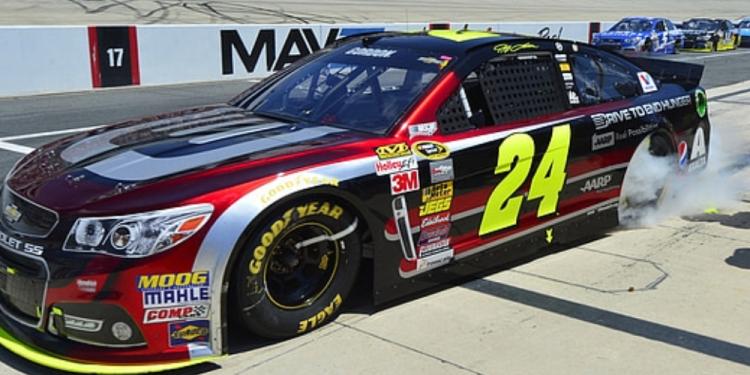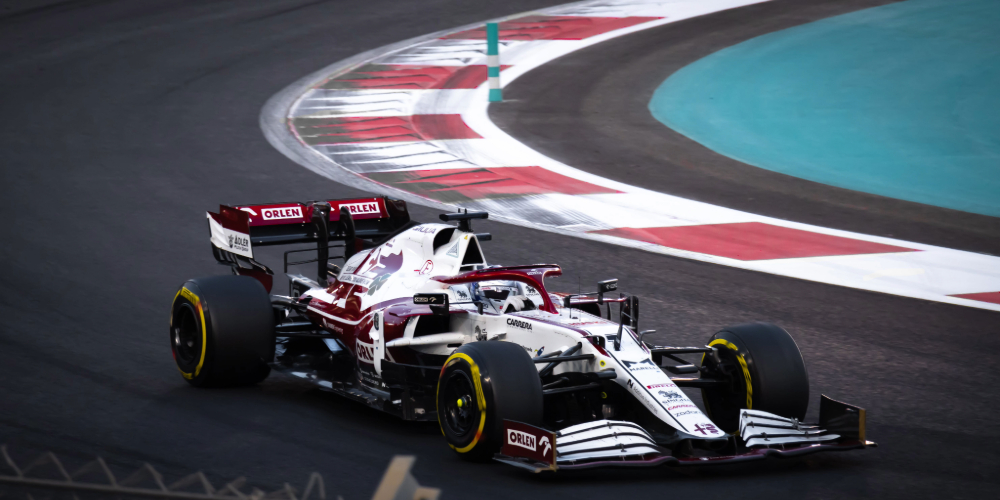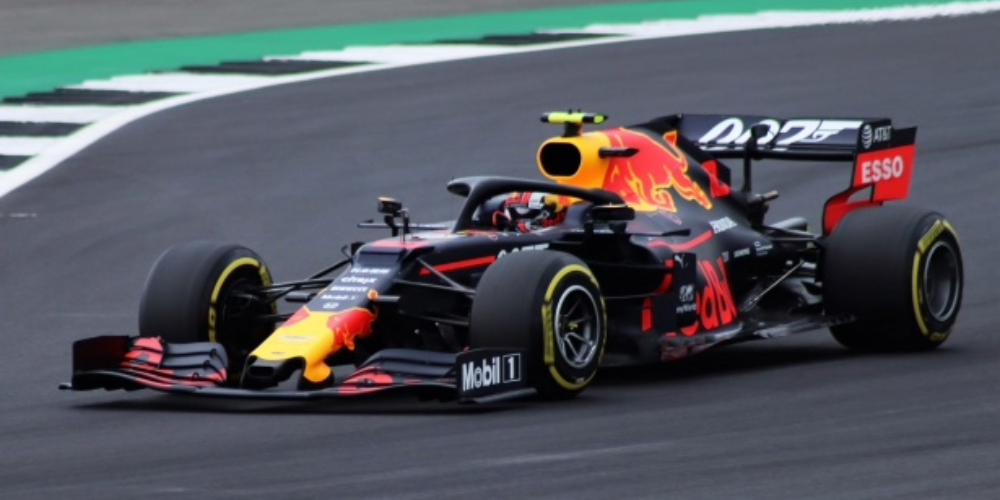Formula 1 vs NASCAR – How To Tell Them Apart
Posted: January 9, 2024
Updated: January 9, 2024
NASCAR, rooted in American culture, features heavy stock cars racing primarily on oval tracks, promoting close-quarters action and strategic drafting. Formula 1, a globally acclaimed motorsport, showcases sleek, high-tech cars navigating diverse tracks worldwide, emphasizing precision driving and cutting-edge technological advancements.

NASCAR and Formula 1 stand atop the motorsport hierarchy in the US and globally, respectively, boasting fervent fan bases and distinct traits. While both Formula 1 vs Nascar revolve around high-speed racing, their philosophies, technology, and culture couldn’t be more disparate. NASCAR, deeply rooted in American heritage, is famed for stock car races on oval tracks, captivating a passionate following primarily in the US. Conversely, Formula 1 enjoys a global footprint, showcasing sleek, aerodynamic cars on international circuits, catering to a diverse worldwide audience.
The histories of Formula 1 vs Nascar unveil distinct origins and evolutionary paths that define their unique personas in motorsport. From the genesis of stock car racing to the precision engineering of Grand Prix events, both series have navigated significant metamorphoses. Here at Gamingzion.com, we should point out that both types of motor racing offer exciting and immersive betting experiences. Whether you bet on either, we suggest you head over to Bet365 Sportsbook for some of the best odds in the business.
Formula 1 vs Nascar – The Cars
According to online gambling news in the US, simply by examining the cars themselves, the disparities between Formula 1 vs Nascar become apparent. NASCAR’s “Car of Tomorrow” sedan chassis is deliberately akin to cars available to the public, with an enclosed driver compartment and wheels snugly positioned beneath the chassis. Stripped of branding, it wouldn’t be outlandish to spot a NASCAR car cruising America’s highways.
Yet, a Formula 1 car is a far cry from anything found on regular roads, flaunting open wheels and an exposed cockpit. NASCAR rides are modified versions of stock chassis sourced from manufacturers like Chevy, Ford, or Toyota. While primarily an American sport, brands like Toyota have been pivotal in the US car market even preceding NASCAR’s inception. In stark contrast, Formula 1 teams must construct their own vehicles, optimising them for aerodynamics, featuring sharp noses crafted to slice through air resistance. They may not be aesthetically pleasing, nor accommodate a family of four, but their speed is breathtaking.
Speed isn’t lacking in either type of car. Formula 1 cars average a mind-boggling 233 MPH, while NASCAR vehicles reach a “mere” 200 MPH. This speed differential plays a role in the driving strategy, as discussed below. However, as a spectator, witnessing cars zoom past, the 33 MPH variance doesn’t diminish the exhilaration.

The marginal edge in F1 speed owes itself to both aerodynamic design and weight—a notable distinction between NASCAR and Formula 1. NASCAR cars tip the scales at 3,250 pounds, while their Formula 1 counterparts weigh less than half that, around 1,500 pounds. This weight disparity corresponds to the utilisation of two different engine types. NASCAR relies on a gasoline-powered 5.86-liter V8 engine, necessitating refuelling at pit stops during races.
Conversely, Formula 1 cars feature a 1.6-liter V6 Turbo engine, apt for their considerably lighter frames. While NASCAR adapts “stock” cars from popular automakers, keeping costs relatively modest at $25 million per vehicle, Formula 1, with its emphasis on optimization and cutting-edge technology, commands a steeper price tag. A team’s duo of F1 cars can soar up to a staggering $470 million.
Formula 1 vs Nascar – The Rules
The distinctions between Formula 1 and NASCAR extend to their race regulations, though some nuances may elude newcomers. NASCAR primarily races on oval tracks, predominantly involving left turns. In contrast, Formula 1 circuits can take any shape as long as they form a loop, offering a variety of twists and turns that allow F1 cars to manoeuvre in multiple directions.
NASCAR prohibits telemetry use, demanding teams to optimise their stock cars before hitting the track. Once racing, adjustments to the car itself aren’t permitted, requiring drivers to rely on strategy rather than real-time alterations. Conversely, Formula 1 permits laptops and data monitoring during races, enabling F1 drivers to fine-tune their vehicles mid-race.
Rules Of Contact
Another notable difference lies in contact regulations. In Formula 1, cars aren’t allowed to touch during races due to safety concerns, while in NASCAR, contact between cars is not only permitted but often forms a crucial part of teams’ strategies.
Pitstops
Pit stops, integral in both Formula 1 vs Nascar, serve different purposes. NASCAR races, being longer, necessitate stops for refuelling and tire changes. On the other hand, Formula 1 mandates at least one pit stop as part of its regulations, requiring cars to use a minimum of two out of three available tire types during a race. However, refuelling isn’t a component of Formula 1 pit stops anymore. Since the 2009 season, it has been banned in races due to cost and safety concerns.
There’s a potential reconsideration of this rule for 2021, according to Jean Todt, the FIA president. Formula 1 cars manage races without refuelling, partly because the races are considerably shorter compared to NASCAR. NASCAR races entail over 330 laps around the track, while Formula 1 races typically span around 185 miles. Consequently, NASCAR races can last up to four hours, while Formula 1 races usually range from one and a half to two hours.

A significant time-based rule divergence between Formula 1 and NASCAR is how time is regarded during races. Similar to baseball, NASCAR doesn’t operate on an official clock; races continue until all laps are completed. However, Formula 1 races can be called off after two hours, irrespective of the laps completed.
Season Length
Another time-related difference lies in the length of the racing season. NASCAR features a minimum of 36 races per season, potentially reaching up to 38 if events like the All Star race and Bud Shootout are counted. On the contrary, Formula 1 holds only 19 races annually. Both seasons culminate in crowning a driver as the “champion,” yet the method to achieve this title varies significantly. While both NASCAR and Formula 1 employ a points system, in NASCAR, points determine who qualifies for the playoffs, and the eventual winner emerges from a narrowed field of 16 drivers across several series. Formula 1, however, crowns its champion solely based on points. The title is secured when it’s mathematically impossible for any other contender to accumulate enough points to surpass the leader, although the formal awarding takes place at the FIA Prize Giving Ceremony following the season’s conclusion.
NASCAR Race Structure
NASCAR embraces a multi-stage race format where a single race is segmented into three stages. Points are granted after each stage, encouraging drivers to excel throughout the entire race, not just at its conclusion. The top racing series, the NASCAR Cup Series, comprises a regular season and playoffs.
- Regular Season: Encompasses 26 races during which drivers amass points.
- Playoffs: The top 16 drivers, based on wins and points, advance to a 10-race playoff culminating in the NASCAR Cup Championship. Teams and drivers must adapt strategies across these phases to secure enough points for a strong position in the championship.
F1 Championship Structure
Formula 1’s championship unfolds through a series of Grands Prix held in diverse countries worldwide. Points accrue based on finishing positions in each race, contributing to both the Drivers’ and Constructors’ Championships.
- Race Weekend: Typically involves practice sessions, qualifying rounds, and the main race event.
- Points System: Allocates points to the top 10 finishers, with extra points for the fastest lap. F1 places emphasis on both team and individual driver performance throughout the season, requiring strategic decision-making for success in each Grand Prix.
Competition Venues and Circuits
F1 vs NASCAR competitions unfold in an array of iconic locations, showcasing their unique characteristics. NASCAR is intrinsically linked with oval tracks, whereas F1 traverses an international assortment of road circuits.
NASCAR Tracks Overview
The NASCAR series predominantly takes place on oval tracks, deeply entrenched in the sport’s legacy. These tracks vary significantly in size and shape:
- Superspeedways: Notably Daytona and Talladega, exceeding 2 miles in length, rank as the longest in the series.
- Intermediate Ovals: Typically around 1.5 miles long, offering a different racing experience.
- Short Tracks: Bristol and Martinsville, spanning less than a mile, provide a distinct challenge.
Each track type influences top speeds and demands unique strategic approaches to car setup and racing techniques.
F1 Circuits Across the Globe
Formula 1 circuits encompass a mix of street layouts, permanent road courses, and purpose-built tracks, taking the competition worldwide:
- Road Courses: Renowned tracks like Spa-Francorchamps boast varying lap lengths, often exceeding 5 kilometres, featuring an array of turns from tight hairpins to expansive curves.
- Street Circuits: Iconic locations like Monaco present a distinct challenge due to their narrow, intricate layout within urban settings.
- Modern Constructions: Current circuits like Yas Marina aim to elevate the viewer experience with cutting-edge facilities and technological advancements.
In F1, the emphasis on aerodynamics and the capacity to navigate a diverse range of track configurations at high speeds is paramount.
Summing Up – Formula 1 vs NASCAR
Though Formula 1 vs NASCAR stand apart as distinct motorsports, there’s ample enjoyment for mutual fans in both. Following both seasons provides a comprehensive appreciation for the science and artistry of car racing. Whether savouring the prestige of Formula 1 or the abundance of NASCAR, sitting down to watch either promises an exhilarating experience. You can bet on both races with Bet365 Sportsbook. This is one of the best online sportsbooks in the US, and as such, offers some amazing odds across the season.
Click here to try the best odds at bet365 Sportsbook












